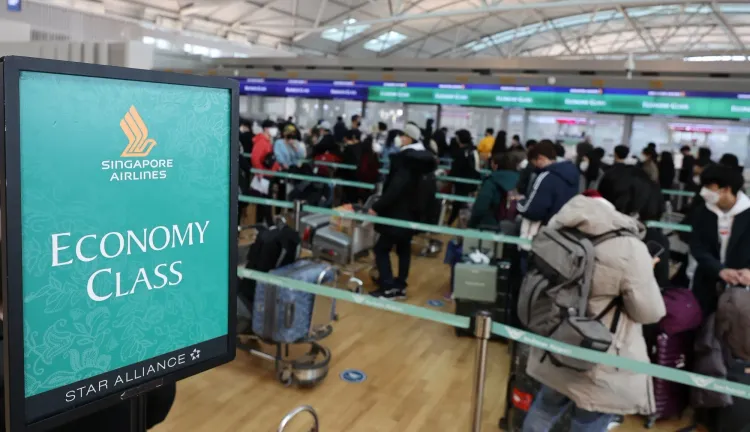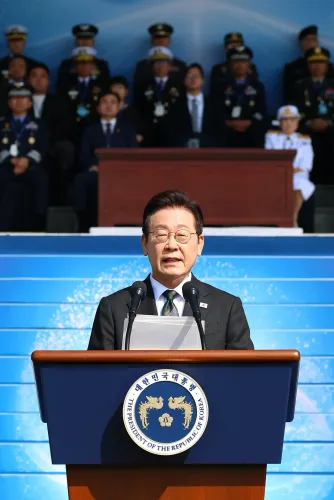Did South Korea's International Air Passengers Hit a Record in the First Half of 2025?

Synopsis
Key Takeaways
- 46 million international air passengers in H1 2025.
- Passenger numbers up by 7.6% from last year.
- International flights increased by 5.6%.
- China led with 7.81 million travelers.
- Incheon Airport handled 36 million passengers.
Seoul, July 6 (NationPress) More than 46 million individuals traveled to or from South Korea by air in the initial half of 2025, achieving a historic milestone, according to data released on Sunday.
A total of 46,029,842 passengers arrived in or departed South Korea through international flights from January to June, reflecting a 7.6 percent increase compared to the same timeframe last year, as reported by the land ministry, Incheon International Airport Corp., and Korea Airports Corp.
This figure eclipsed the previous record of 45.5 million set in the first half of 2019, as noted by the Yonhap news agency.
The count of international flights for this six-month period also rose by 5.6 percent, surpassing the prior first-half record established in 2019.
China accounted for the highest number of air travelers to and from South Korea, with 7.81 million individuals traveling between the two nations by air in the first half of the year, marking a 24.3 percent increase compared to the previous year.
This significant rise can be partly linked to the visa-exemption program that China launched for South Korean visitors in November.
Following China, Japan experienced a 9.9 percent year-on-year increase in travelers to and from South Korea.
The influx of South Korean travelers to Japan has been driven by a weak yen and, more recently, the expansion of flight routes to smaller cities in Japan.
In terms of airports, approximately 36 million passengers utilized Incheon International Airport, the primary gateway to Seoul, while 9.91 million passengers traveled through six other international airports across the nation.
An industry official stated, "The demand for international flights reached a record high in the first half due to the normalization of overseas travel, especially centered on China and Japan, along with supply expansions. The growth in demand is expected to persist in the latter half of the year, given the stabilizing exchange rates and global oil prices."









